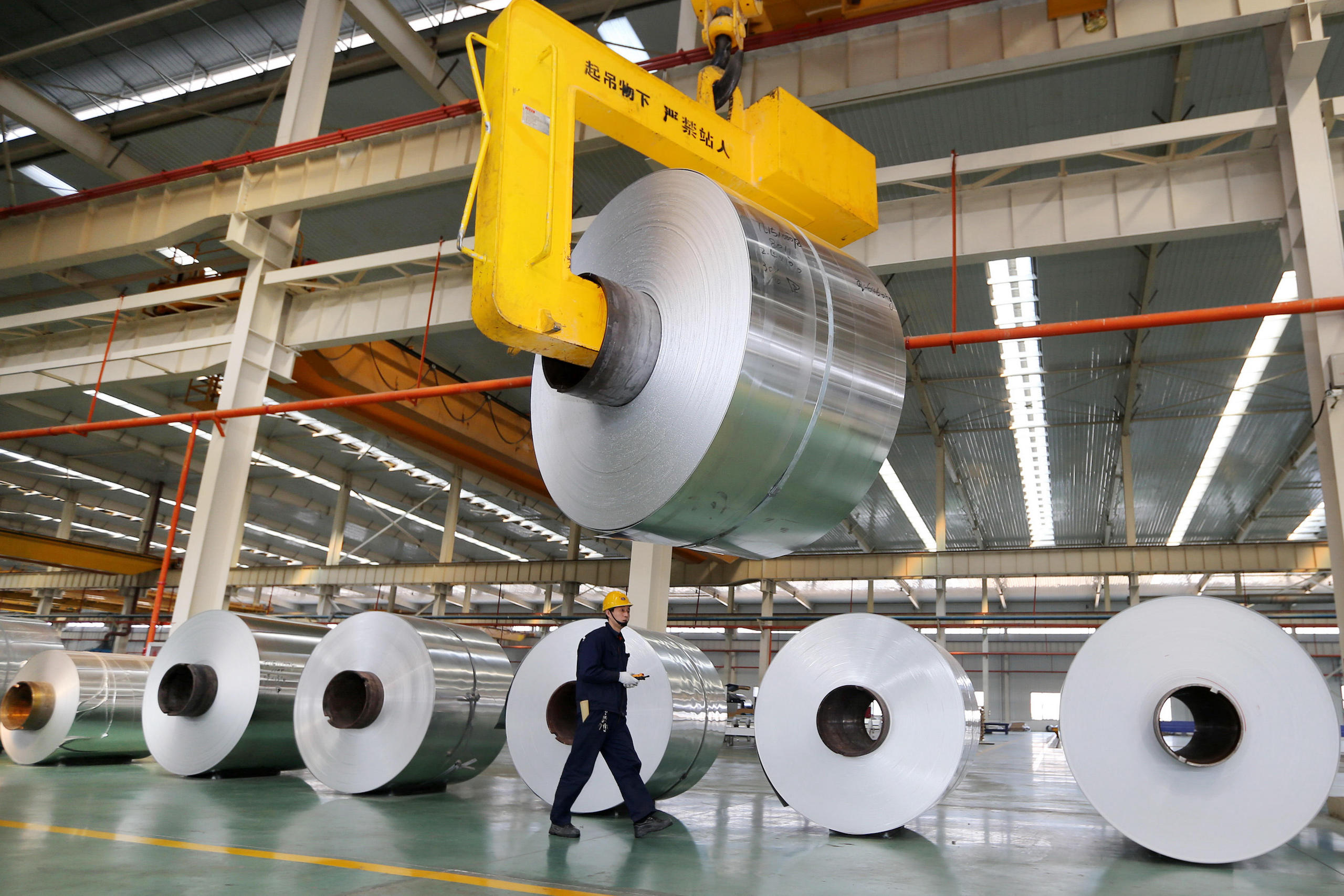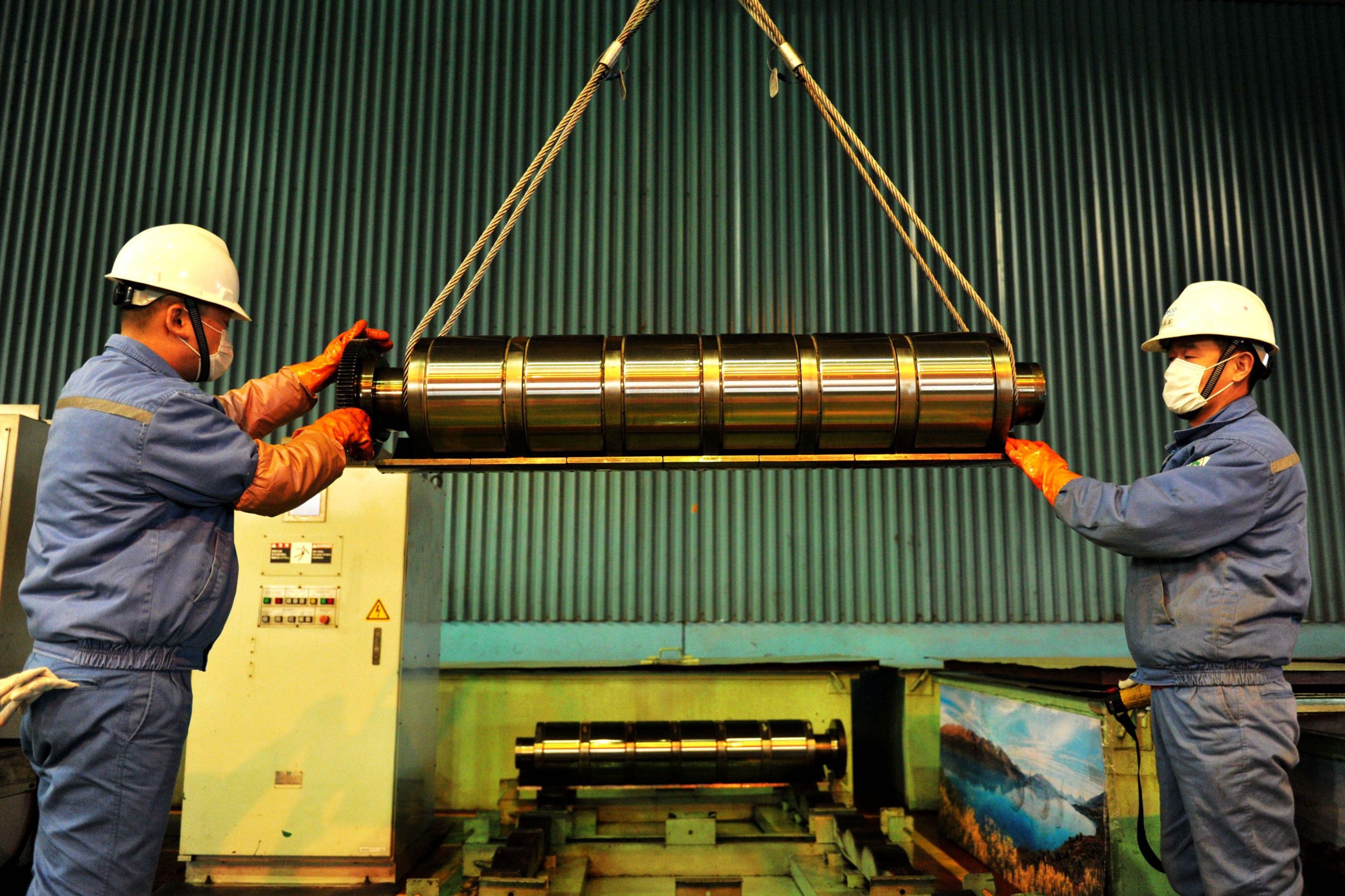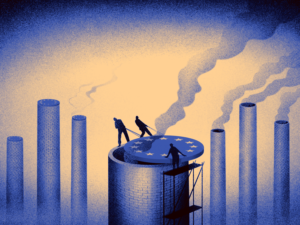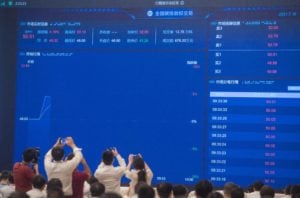European Union (EU) negotiators agreed in December to charge a carbon border tax on certain imports into the bloc, beginning in 2026.
Described by some media as a “green tariff”, the Carbon Border Adjustment Mechanism (CBAM) will require non-EU companies to pay a levy on some emissions-intensive products to make up the difference between the carbon price in their origin countries and that of the EU emissions trading system (ETS), the bloc’s key climate policy tool.
Although China is the EU’s largest trading partner, CBAM in its current form will have limited impacts on the country’s exports to the EU, various experts have told China Dialogue. But they expect it to act as an “external incentive” for China’s national ETS to grow so as to offset some long-term impacts.
The mechanism may motivate Chinese policymakers to improve the national carbon-accounting system, start obliging certain companies to pay for their emissions, and speed up the expansion of the national carbon market, experts say.
A ‘strong and clear’ signal
CBAM is designed to prevent EU companies from moving their production to places with less stringent climate policies outside the bloc – a scenario known as “carbon leakage”.
It also intends to level the playing field between EU firms and their overseas competitors on some emissions-intensive products by equalising the carbon prices paid for EU products and for imports.
The mechanism will initially cover six categories of products: iron and steel, cement, aluminium, fertilisers, electricity and hydrogen.
During a transition period from October 2023 to December 2025, non-EU manufacturers will only be required to report their emissions.
After that, a levy will be brought in gradually from 2026 to 2034, meaning EU importers will have to purchase certificates equivalent to the weekly EU carbon price.
China exported €472.7 billion (US$507.8 billion) worth of goods into the EU in 2021. But from a trade perspective, as currently designed it won’t have much impact on Chinese goods.
An analysis published in China Dialogue in 2021 found that the mechanism would only affect cement, aluminium, fertilisers and iron and steel, which together represented less than 2% of China’s exports into the EU in 2019.
Wu Bixuan is a senior partner at Beijing-based Hiways Law Firm and specialises in international trade law. He tells China Dialogue that the “psychological impact” of CBAM on Chinese policymakers is “far greater” than its actual impact as it puts an “exterior monetary incentive” on cutting emissions.
Wu says that the mechanism sends a “strong and clear signal to China and other countries that international trade and a nation’s competitiveness can now be affected by a new factor: carbon.”
In that sense, CBAM can be regarded as the “number one external incentive” for policymakers to improve China’s national ETS so as to keep its impacts on Chinese exports to a minimum, he notes.
Some experts also point out that CBAM’s main purpose is not to impose tax on non-EU trading partners, as it may appear to be. Rather, its target is the EU’s own industrial sector, according to Qin Yan, lead analyst at Refinitiv, a financial markets data provider.
As CBAM is phased in, the free allowances given to the EU’s industrial sector by the EU ETS – the current measure against carbon leakage – will be phased out in parallel so as to avoid double protection, Qin wrote in Chinese business publication Caijing last June. Therefore, CBAM’s “core” is to motivate the bloc’s industrial companies to slash their emissions, Qin said.
Carbon prices and market expansion
Launched in July 2021, China’s national ETS currently covers the power sector only. While the scheme has largely reached its initial goals of setting up a trading system and raising basic awareness of emissions trading, it faces various challenges, such as underwhelming trading volumes and a low carbon pricing point. There is a consensus among experts that CBAM might encourage the market to grow.
Chen Zhibin, senior manager of Berlin-based thinktank adelphi, tells China Dialogue that CBAM will not have substantial impacts on China’s national ETS in the short term because companies will not need to pay until 2026.
However, once the tax officially kicks in, the difference in the costs of emitting CO2 under the EU and China’s carbon markets will be felt directly, and that might encourage Chinese authorities to phase in paid allowances to make companies pay for their emissions, Zhibin says.
At present, China’s power plants can largely offset their emissions with free allowances handed out by the government, limiting their motivation to cut emissions.
CBAM could also push companies to realise that carbon prices are “very important” and so pay more attention to them, according to Chen Mei’an, programme director and senior analyst of innovative Green Development Program (iGDP). This would be particularly significant for industries covered by CBAM, she notes.

A report co-authored by Mei’an in 2021 estimated that China’s aluminium and iron and steel industries – the two sectors expected to be most impacted by CBAM – would have to pay a combined 2–2.8 billion yuan (US$295–413 million) in carbon border tax to the EU every year. This would put an extra cost of 652–690 yuan (US$96–102) per tonne on iron and steel, and 4,295–4,909 yuan (US$634–725) per tonne on aluminium, the report found.
“At the current stage, the difference in the carbon prices between China and the EU’s carbon markets is quite big,” Mei’an says. “The cost of CO2 emissions has not been fully reflected in China’s carbon prices. Therefore, [if we] compare the carbon prices under the two carbon markets, [Chinese] companies’ efforts to reduce their emissions will not be shown, either.”
According to a Bloomberg report, the cost for a power company to release a tonne of CO2 in China averaged less than $9 in 2022, compared to $85 in the EU.
Moreover, Mei’an thinks that CBAM could motivate China’s national carbon market to improve further, such as by expanding into more sectors, in order to support companies to deal with CBAM.
Chinese officials had planned to incorporate eight sectors – petrochemicals, chemicals, building materials, iron and steel, non-ferrous metals, paper-making, power and aviation – into the national carbon market by 2025. But that plan has been delayed due to poor emissions data, according to a report by Caijin.
“If the industries covered by CBAM are already shouldering certain carbon costs under China’s carbon market, it is possible that these costs would be offset in some way when companies export their goods into the EU, as companies cannot bear two carbon costs,” Mei’an adds.
According to the latest proposal, CBAM will cover imports from all third countries except Iceland, Liechtenstein and Norway, which participate in the EU ETS, and Switzerland, whose ETS is linked to it.
Impact on carbon accounting
China is establishing systems and standards for emissions-intensive industrial companies to account for the emissions of their products, and CBAM could help accelerate the process, according to Song Yutong, carbon analyst at Refinitiv.
Three Chinese government agencies jointly issued guidelines last August to accelerate the development of a national accounting and verification system for CO2 emissions.
According to the document, one of the “key tasks” for the Chinese authorities is to “establish and improve the carbon accounting methods for key products”. Electricity, iron and steel, cement and aluminium, which CBAM will cover, were among a list of “key products” earmarked by the authorities.
“This means that China will conduct extensive and thorough research into those key products, including their carbon emissions, emissions intensity, emissions factors and relevant parameters, and build a comprehensive database,” says Song.
In her view, the move can provide data support for Chinese companies to follow CBAM’s rules and carry out possible trade negotiations with the EU side.
From the perspective of companies, particularly those in the industries that will be affected by CBAM, they may look to improve their capabilities for managing carbon-related affairs.
“In order to address the potential restrictions of CBAM and increase their competitiveness, companies may further increase their carbon management ability and improve their internal systems related to emissions data,” Song notes.
Song says it is possible that the EU would upgrade its CBAM to cover more sectors, products and emissions scopes, depending on its reviews of the mechanism after the transition period.
“If that is the case, it will bring a bigger impact on China’s exporting industries,” she adds.









